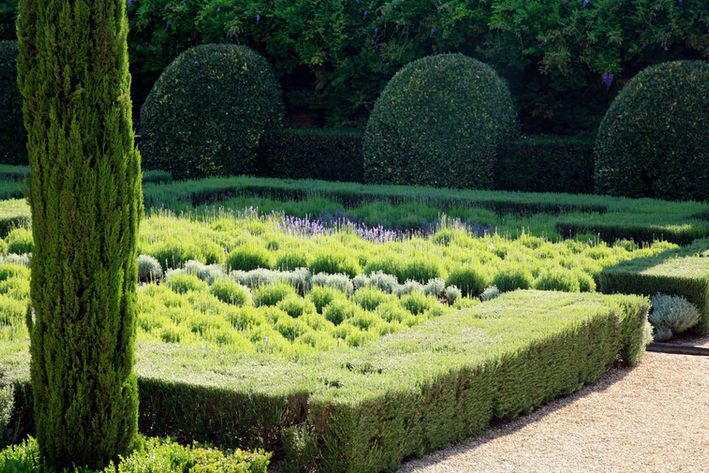
THE GARDENS
Labeled « Jardin Remarquable » since 2004 by the French Ministry of Culture
Awarded with the 2022 Garden Art Prize by "La Fondation Signature de l'Institut de France"



At the end of the 20th century, following the rhythm of architectural restorations, the gardens were recreated in order to regain some of their former splendor.
Today, the large hornbeam, the ellipse, the low garden and the ‘’knot garden’’ offer visitors a harmonious walk.
The terrace garden
Hornbeam bower and ellipse
The reconstruction of the garden was based on a reflection on the gardens of the 16th and 17th centuries, supported by a respectful meditation on the "spirit of the place".
The green rooms, designed as they were in the 17th century, are surrounded by corridors which draw a labyrinthine path to whoever undertakes them. They lead to the Ellipse where the Fountain of the Satyr flows.
The windows open onto the boxwood lines surrounding the flower beds and various viewpoints of the castle. Upon reaching the river the balcony dating back to the 16th century, allows a delightful view downstream.
Crossing the driveway, the maze of the bamboo grove makes children happy.
The garden within the walls
The "chemin de ronde" and the low garden
The walk through the shady scented wisteria tunnel leads to the box crenellated and rose lined wall path.
A few steps down, in the large parterre, eleagnus planted in benches contain cabbage-cut lavenders. The small channel of the fountain of Apollo and Venus flows among topiaries of various species. This is where the senses of sight, hearing and smell are satisfied.
Garden seats invite the visitors to linger, to savour these gardens. Opening onto the Virgilian countryside, it reserves the surprise of a "knot garden" filled with pink roses on bleachers.
A great walking area
The north park, along the Vézère
The dry moat is planted and laid out for a walk which can be extended pleasantly into the park to the north of the castle. The path, running alongside the river, leads to the Nymphs basin, carved into the rock and laid out in the 17th century.




















